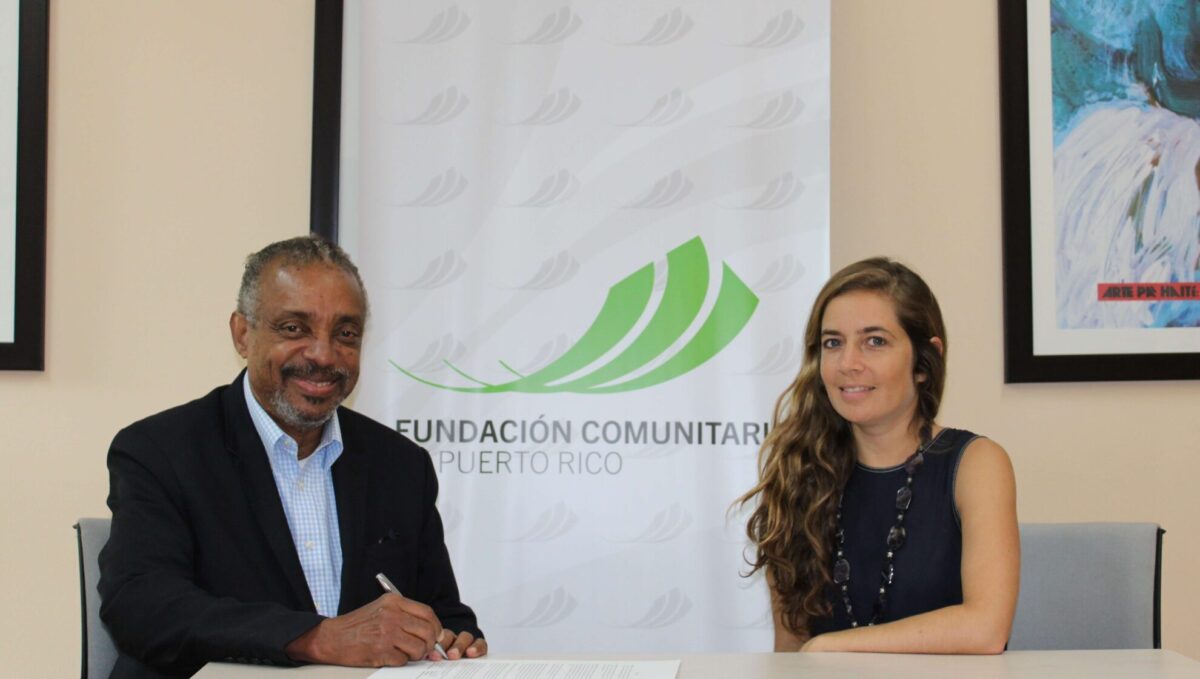Fundación Segarra Boerman e Hijos and Fundación Comunitaria de Puerto Rico (FCPR) joined resources to carry out a feasibility study leading to the development of a Green Energy Community Corridor in vulnerable communities in the central mountainous area of the Island. The studio is part of a social justice proposal that the FCPR is promoting based on its learning with the first solar community, Toro Negro in Ciales; and that was part of the FCPR presentation before the United States Congress in April 2019.
The cost of the study is estimated at $158,000, which will come from an investment by the FCPR ($50,000) and Fundación Segarra Boerman e Hijos ($50,000). Other philanthropic and social investors are invited to join this initiative.
“Fundación Segarra Boerman e Hijos respond to the needs of the communities and what they have communicated to us has been the focus on renewable (solar) energy”, said the executive director of Alexandra Hertell.
Since Hurricane María (September 2017), Fundación Segarra Boerman e Hijos has supported community renewable energy initiatives through grants to non-profit organizations that promote community access to solar energy systems. From there they went on to support the study of the Green Energy Community Corridor to strategically expand their contribution.
“We were looking for ways to maximize our impact to ensure that the focus in Puerto Rico is towards renewable energy, and we strongly believe in the work of Fundación Comunitaria. Furthermore, we wanted to support our most vulnerable communities in alliance with other organizations. This study is the first step to achieve what we all want to Puerto Rico that is not dependent on fossil fuels or methane gas”, added Hertell.
Fundación Segarra Boerman e Hijos has also supported communities initiatives related to solid waste, food sovereignty and environmental education.
The president of the FCPR, Dr. Nelson Colón Tarrats, highlighted that after Hurricane María, the FCPR executed a strategic plan to facilitated access to essential resources such as renewable energy. Since then, several community projects have acquired solar equipment thanks to grants and technical assistance from the FCPR, whose resources were nourished by the Community Recovery Fund for Puerto Rico. Among these, the solar community of Toro Negro, in Ciales; the Esperanza Village micro-grid in Juncos; community aqueducts; and emergency rooms and/or refrigerators of community health clinics. In addition, the project to install solar systems in commerce and critical facilities in the island municipality of Culebra, thanks to a grant from the Economic Development Administration.
“This Green Corridor could be an example for other communities on the Island, the Caribbean and the rest of the Americas,” said Colón Tarrats.
According to the testimony of Colón Tarrats before the Natural Resources Committee of the federal House of Representatives, the FCPR is betting on multisectoral support to promote the development of the corridor that would approximately benefit 250 low-income communities.

